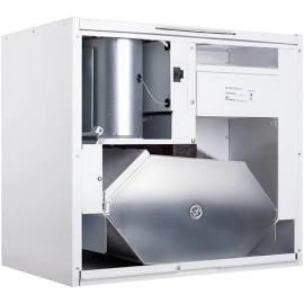Promotion of domestic ventilation in NRW continues in 2021
Heading 1

The demands on the buildings we live in are changing. Ever-improving standards of insulation materials and windows ensure that today’s buildings are tighter than ever before.
This development means that less energy needs to be used to keep the room temperature comfortable. However, there are also considerable disadvantages if adequate ventilation is not provided: The amount of water produced daily in an average German household in the form of water vapor contained in the room air is greater than 10 liters. In modern buildings, this amount of water can only be removed by ventilation measures in order to avoid structural damage, mold infestation and hygiene problems. Added to this are the airborne substances resulting from the use of modern building and operating materials in a building, which pollute the air we breathe and must also be removed. This means that indoor air contaminated with substances must be ventilated.
A corresponding fresh air volume flow must be provided to compensate for this exhaust air. This is made up of an air volume flow due to unavoidable leaks and a volume flow due to ventilation measures: Window opening or mechanical ventilation.
The essential ventilation concept in accordance with DIN 1946-6 determines how high the outside air volume flow is that is required to protect the building against moisture. If this air volume flow is guaranteed permanently and constantly even when the occupants are absent, it is sufficient to ventilate with the windows. It is simpler, more convenient and safer to use a mechanical ventilation system.
Heading 2

The demands on the buildings we live in are changing. Ever-improving standards of insulation materials and windows ensure that today’s buildings are tighter than ever before.
This development means that less energy needs to be used to keep the room temperature comfortable. However, there are also considerable disadvantages if adequate ventilation is not provided: The amount of water produced daily in an average German household in the form of water vapor contained in the room air is greater than 10 liters. In modern buildings, this amount of water can only be removed by ventilation measures in order to avoid structural damage, mold infestation and hygiene problems. Added to this are the airborne substances resulting from the use of modern building and operating materials in a building, which pollute the air we breathe and must also be removed. This means that indoor air contaminated with substances must be ventilated.
A corresponding fresh air volume flow must be provided to compensate for this exhaust air. This is made up of an air volume flow due to unavoidable leaks and a volume flow due to ventilation measures: Window opening or mechanical ventilation.
The essential ventilation concept in accordance with DIN 1946-6 determines how high the outside air volume flow is that is required to protect the building against moisture. If this air volume flow is guaranteed permanently and constantly even when the occupants are absent, it is sufficient to ventilate with the windows. It is simpler, more convenient and safer to use a mechanical ventilation system.